A recent paper on stars used to calibrate the just-launched James Webb Space Telescope (JWST) has a strong connection to UNC Chapel Hill. The first three authors have a UNC connection, and the telescope is named after James Webb, who graduated from UNC in 1928 and was the administrator of NASA from 1961 to 1968 when the U.S. paved the way to the Moon with the Apollo project.
The lead author of the paper is Susan Mullally, who earned her Ph.D. from the Department of Physics and Astronomy (as Susan Thompson) in 2010. She was part of Chris Clemens’ white dwarf group. She is now Deputy Project Scientist in the JWST Mission Office at the Space Telescope Science Institute (STScI). The second author is Greg Sloan, who is currently an adjunct professor in the Department of Physics and Astronomy. He also works for STScI (full-time), where he is a member of the team supporting the Mid-Infrared Instrument (better known as MIRI) and is coordinating the calibration of JWST‘s science instruments. J.J. Hermes, the third author, spent several years in Chris Clemens’ group as a Hubble Fellow. He is now an assistant professor at Boston University.
Dr. Mullally’s paper used data from the Transiting Exoplanet Survey Satellite (TESS) to check potential standard stars for JWST for any variability. Standard stars are used to calibrate astronomical data, and the one thing they should not do is vary. TESS is designed to detect exoplanets by watching stars to see if the light from them dips as any planets pass between the star and us (i.e., they transit the star). TESS does this by monitoring all stars in large chunks of the sky for weeks at a time, including the stars JWST is considering as possible standards. Mullally’s paper reveals that four potential standards vary by more than 1%, which is enough to strike them off the list.
The figure shows how the emission from one of those variable stars changes with time. The star is HD 38949, a star much like the Sun (with a spectral type of G1 V, compared to the Sun’s G2 V). It varies with a period of about 3.8 days, most likely due to a combination of a very fast rotation period and strong starspot activity. For standard stars, JWST would definitely prefer more normal stars, like the Sun, which rotates every 27 days (at its equator) and has only small spots that have little impact on its total emission.
The paper is entitled, “Searching for TESS Photometric Variability of Possible JWST Spectrophotometric Standard Stars.” It will be published in the Astronomical Journal, and a preprint is available on the arXiv (contribution
2201.03670).


